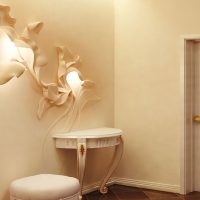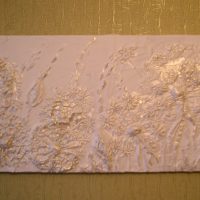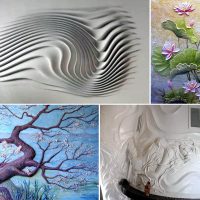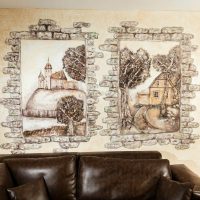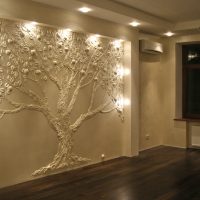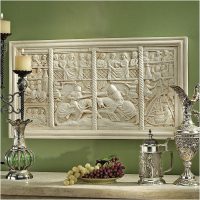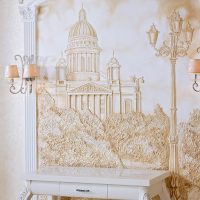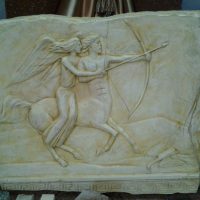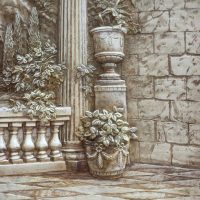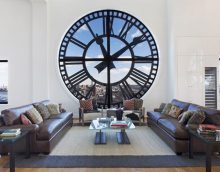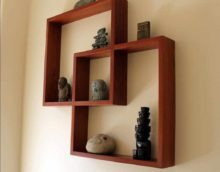Bas-relief images in the interior of the apartment: advantages, photos
Bas-relief - a type of decor in architecture. In French it means "low relief". The convex image stands out above the wall at half its volume. The buildings, beginning in the Paleolithic, were decorated with relief decoration. Then these were cave paintings. Then art spread to the Ancient East. Such sophistication could only afford aristocrats. The founder of the use of bas-reliefs in the decor is Ancient Egypt. It was used to paint the tombs of the pharaohs. In ancient Greece and Rome, the bas-relief decorated temples. In Soviet times, it was used in the decoration of buildings, structures, theaters, metro stations, monuments, etc.
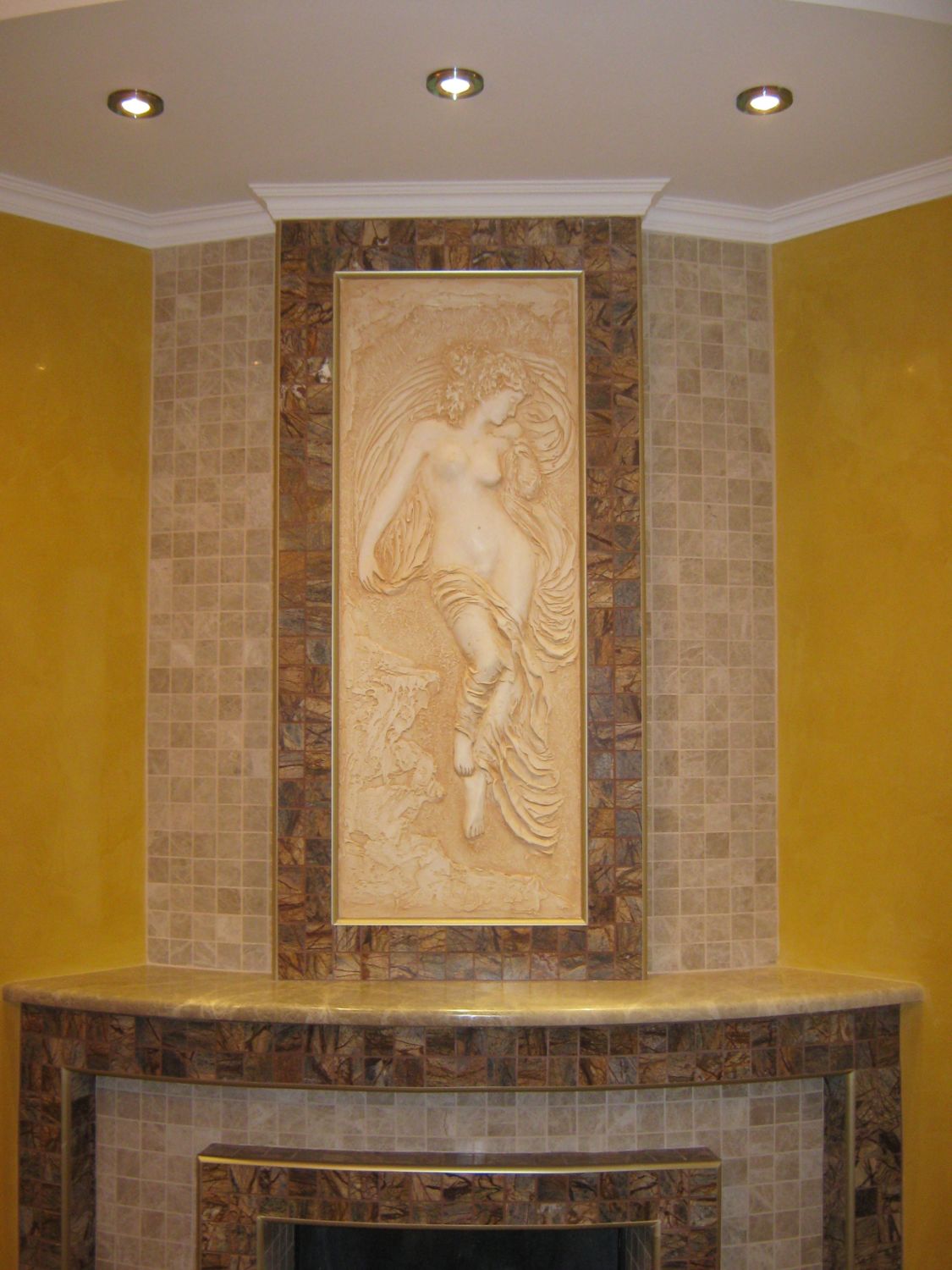
Beautiful bas-relief in the interior

Bas-relief on the wall

Bas-relief with a tree in the interior
Content
The advantages of wall bas-relief
The bas-relief in the interior looks very elegant and original. The room creates a special charm. This is a great option for decorating an empty wall, or masking its uneven surface. In addition, the composition can be selected to suit your individual taste. And recreate it, right on the wall, with your own hands.

Design of a room with a bas-relief

Bas-relief in the bedroom interior
What is necessary for work
Basically, the material is gypsum, plaster, clay, papier-mâché, polystyrene. A metal or wooden base is also used, which is poured or processed as intended by the composition, and then mounted in the right place on the wall.
Each bas-relief manually created by the author is exclusive. Even the same picture in different rooms will look different. The bas-relief is specially created for a specific interior, so repeating a masterpiece twice anyway will not work. Such high uniqueness makes each decor unique.

Beautiful bas-relief with nature in the interior

Bas-relief with dandelions in the interior

Bas-relief in the interior
Bas-relief images are used in many architectural styles, from Gothic to Art Nouveau. However, for the Gothic - it is an integral element. At the temples, the images carried not only a decorative function, but also showed biblical stories so that illiterate, ordinary people could see important events from the Holy Scriptures. One has only to look at the main doors of the Cathedral of Milan.
In baroque, the bas-relief images served as an accent of luxury interior. Mostly plots from myths were recreated there. An example of Peter's Baroque is the Summer Palace in St. Petersburg.
The bas-relief in Art Nouveau can be seen in the “Metropol” in Moscow. Today, this decor adorns apartments, offices, cafes, country houses, etc. The bas-reliefs in the interior of the apartment in niches decorated with lighting look especially unique. Thus decorate hallways, stairways, bedrooms. Various lighting options, with spot or hidden lights, emphasize the interior.
The bas-relief in combination with wood, metal forging, glass, stone, leather, marble, etc., looks expensive and truly exclusive. Moreover, you can make a bas-relief with your own hands.
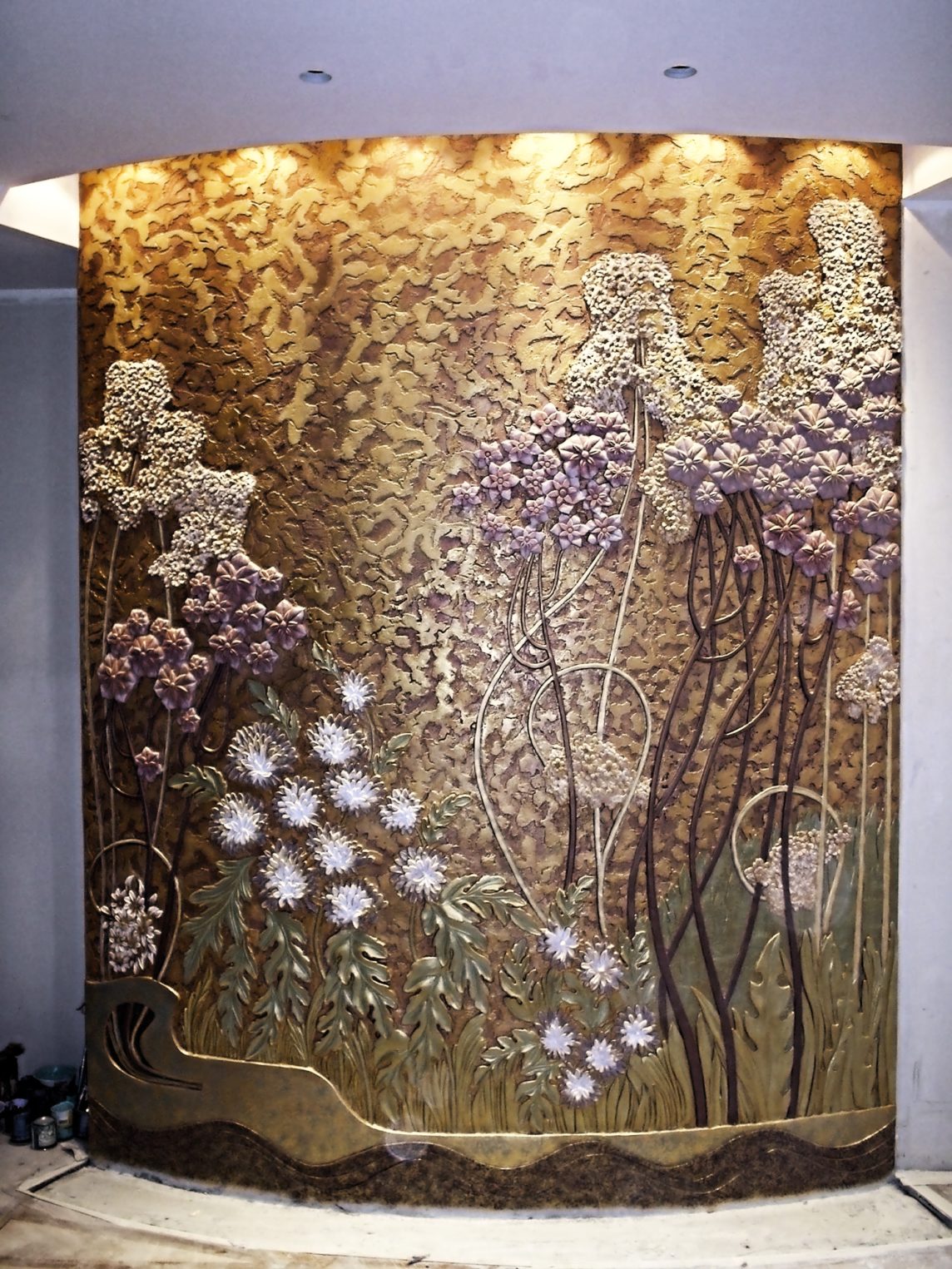
Bas-relief with nature in design

Beautiful bas-relief in design
DIY bas-relief
Work begins with the preparation of the wall. It is cleaned, primed and dried.Then draw the selected image. The easiest way to make a bas-relief on the wall with your own hands is plant prints. Today they are used quite often and make them easier.
Necessary materials:
- a solution of gypsum, alabaster or other material, to choose from;
- wood cutters;
- stencil or film;
- paint, varnish for impregnation;
- tile glue, self-tapping screws, nails, etc.
First you need to draw a theme. Moreover, the application of the image also depends on the method of operation. If this is a finished picture, which will then be attached to the wall, then there are some rules.

The interior of the bedroom with a bas-relief
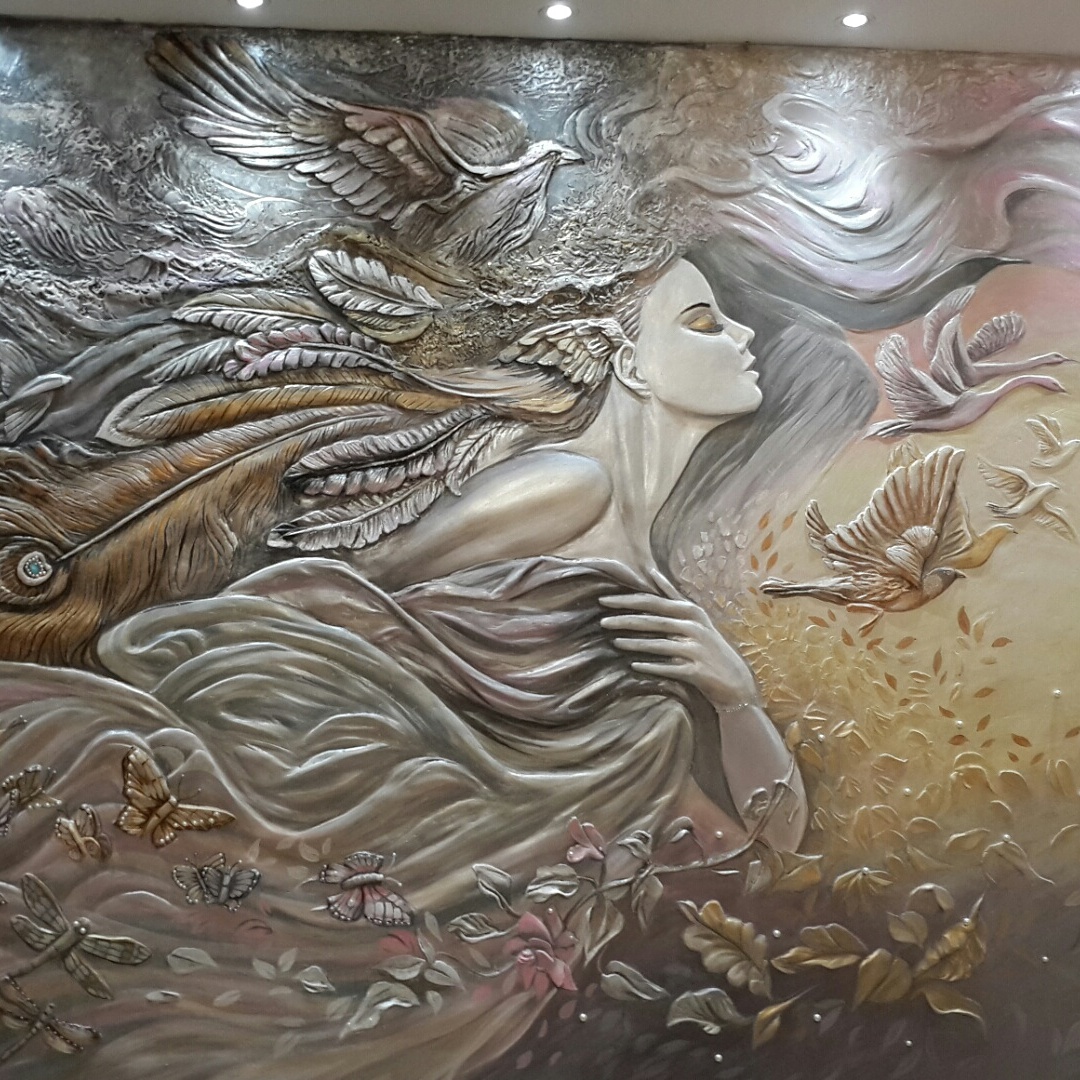
Interior with a bas-relief

Beautiful bas-relief in the interior
- Assemble the frame with the sides under the picture. Available materials are suitable for him.
- Cover the resulting form with a film. The main thing is that there are no folds.
- Pour the finished mixture into the mold.
- After the form has dried, mark the outline with cutters. A ready-made stencil is useful here.
If the bas-relief is decided to be made initially on the wall, then it is cleaned and the soil is applied. On a dry wall draw a contour of the picture. You can make a stencil in advance.
The following is the creation of the relief. If the picture is made separately, then after the form has dried and the outline is marked, a new solution is prepared, which creates the volume of the picture. The work is done in layers, in order to notice and remove flaws in time. If the bas-relief is created immediately on the wall, then a draft layer is first made, the necessary zones are filled with the solution, and excess fragments are removed. Then everything should dry. And only then they finish the finish, bringing it to an aesthetic appearance.
There is a very easy method of embossing, suitable for both work options. Based on the drawing, forms are made for its relief sections. These forms are poured with a mixture, and then the finished pieces of the picture are attached to the wall or the painting, the joints are covered with plaster and cleaned with sandpaper.
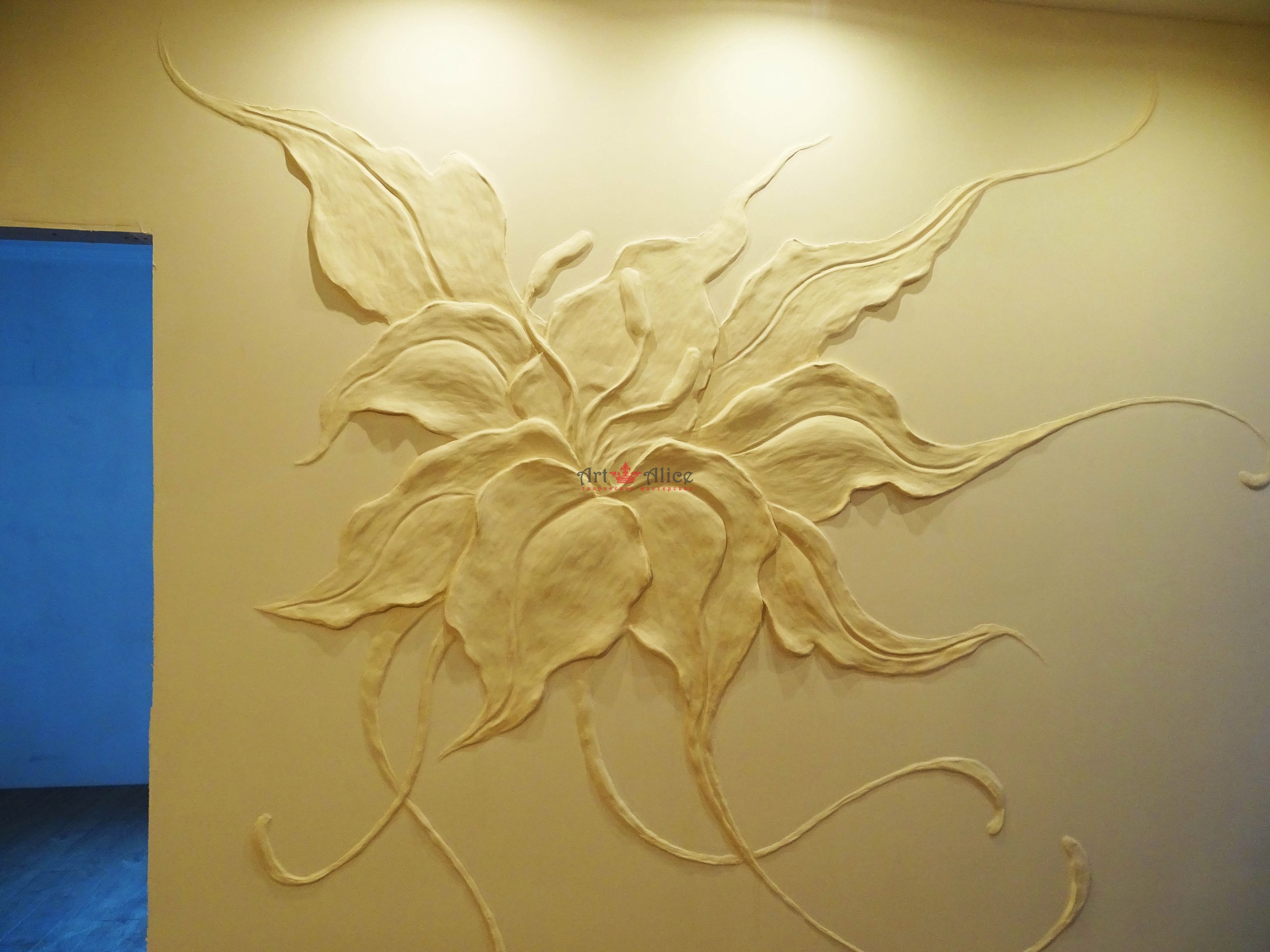
Bas-relief with a flower in the interior
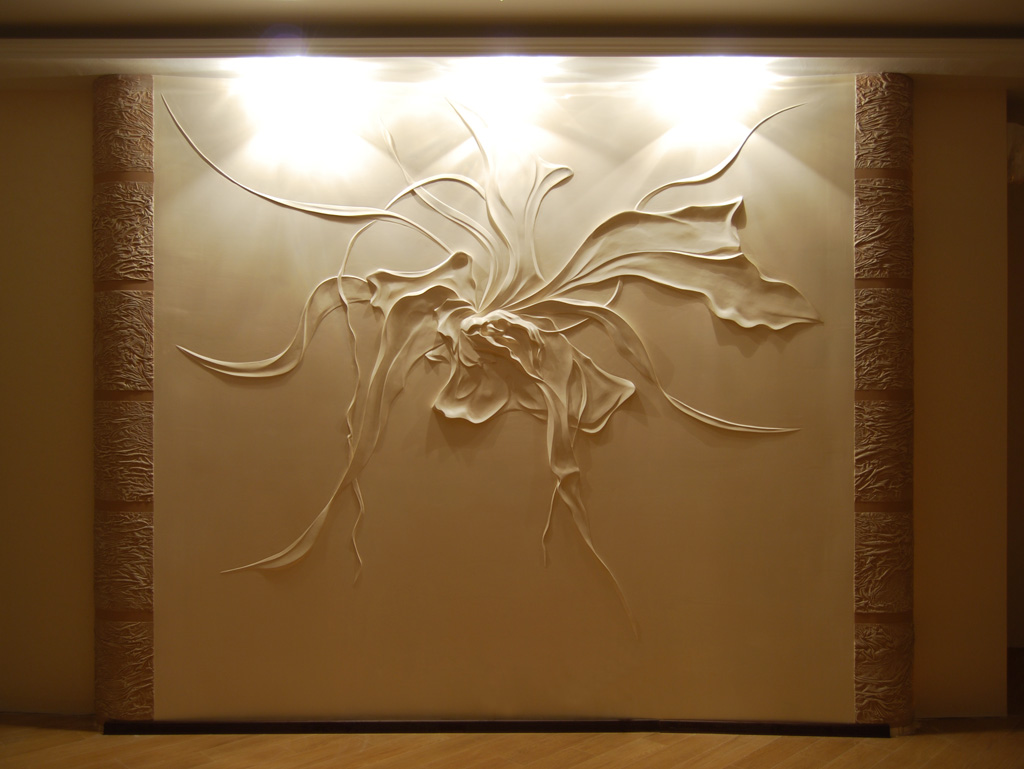
Bas-relief in the interior
How to attach a separately made picture
To do this, use tile adhesive. A large-weighted picture can be attached using nails, self-tapping screws, or by deepening it into the wall. To do this, prepare a niche, and insert an image into it. All seams are quietly smeared with mortar and rubbed with emery.
The finished wall bas-relief is thoroughly sanded with sandpaper, all cavities and seams are cleaned of dust, primed with a special brush and painted. A water-based paint is suitable, which covers all protruding parts. It is better to use an ordinary sponge.

Bas-relief with a girl on the wall
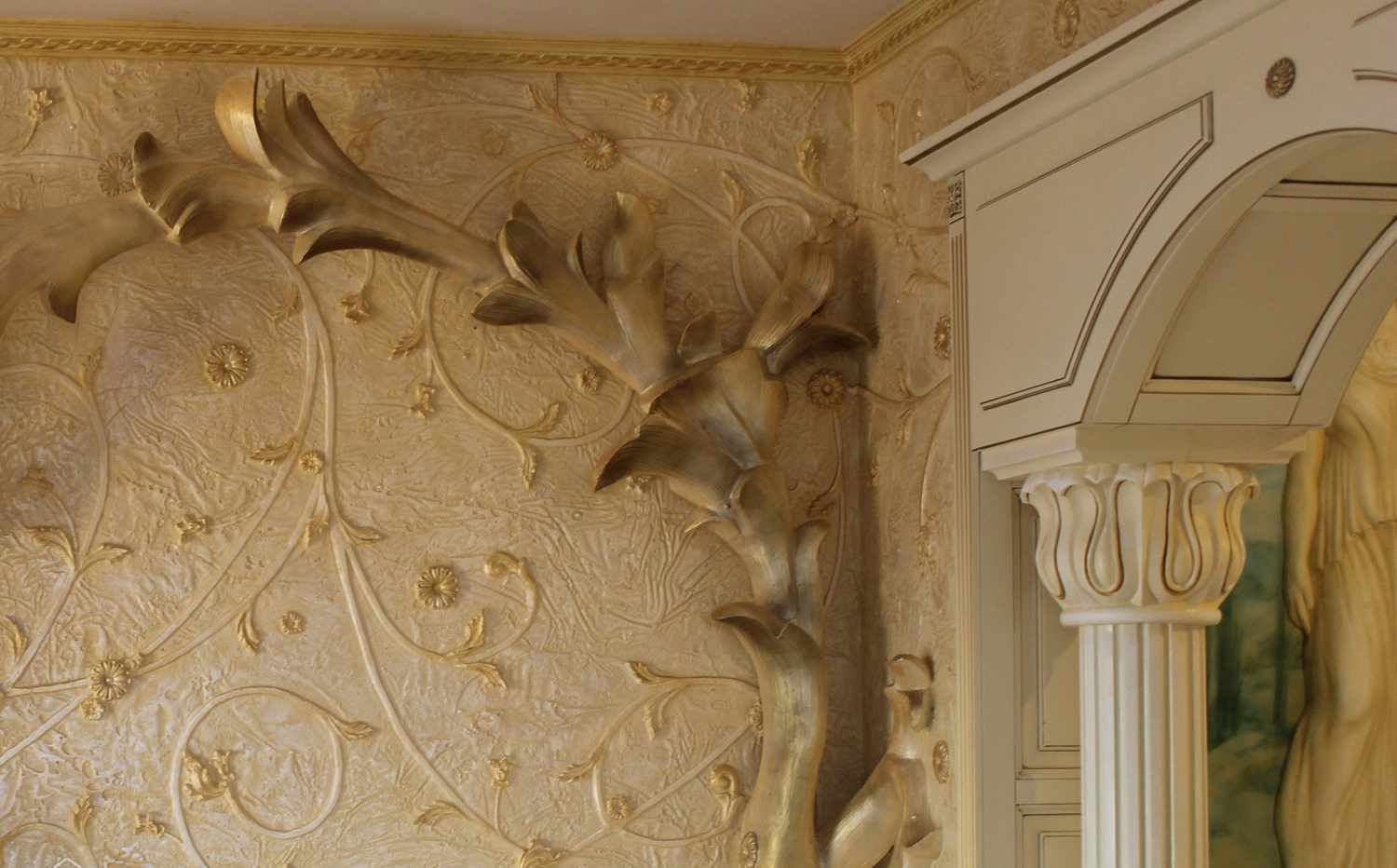
Bas-relief in the interior

Beautiful bas-relief in the room
DIY plaster mold
Not all forms can be bought at the store. However, if the desired form is not found, you can do it yourself. For example, in the figure there is a bird or some kind of animal. You can buy the desired figurine or toy, and put it in a plywood box. Pour its contents with liquid silicone, which is sold in all construction stores. A day later, after the silicone dries, the box is taken apart, the figurine is taken out and that’s it. The required form is ready. Alabaster mixture is well poured into it. Moreover, silicone molds do not need to be lubricated, unlike children’s apiaries made of plastic material. The latter should be lubricated with vegetable oil.
To prepare a mixture of alabaster is taken: gypsum - 2 parts, water - 1 part. The prepared mixture is poured into molds and waits for complete drying for about a day.

Bas-relief with a butterfly in the bedroom
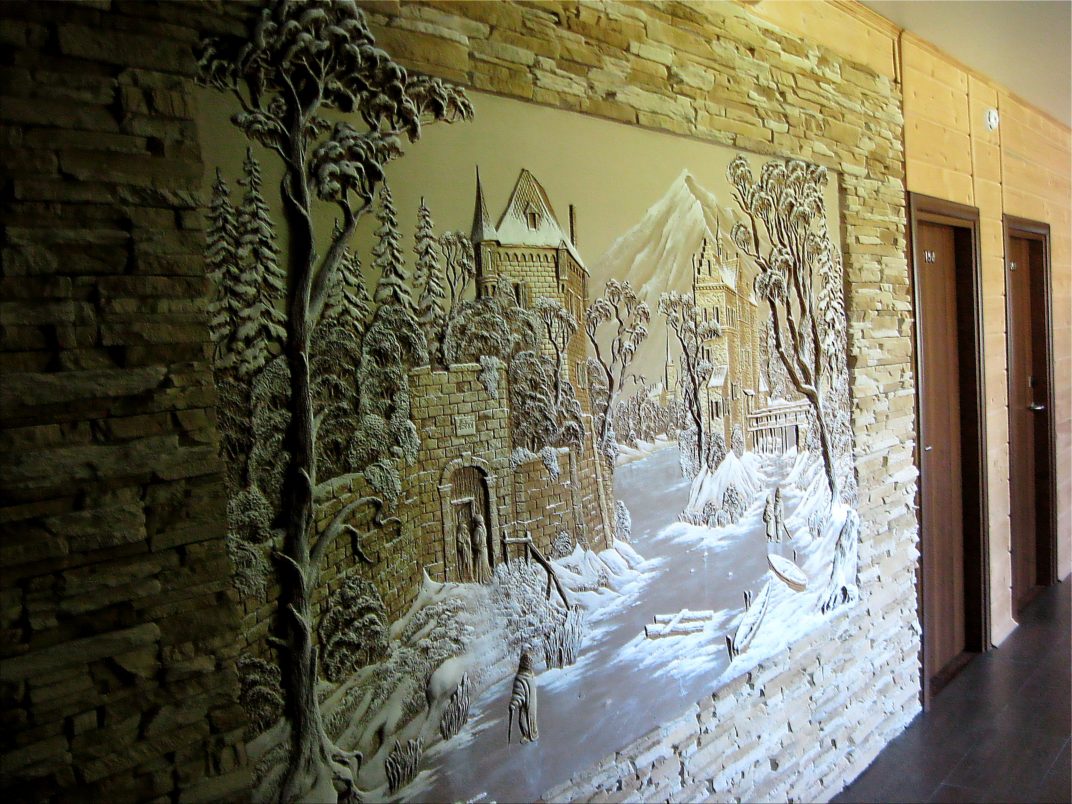
Bas-relief with a landscape
Bas-relief with lilies
Image creation takes place in several stages.
- Plaster and primer are applied to the prepared surface. The paint primer is excellent, as it creates a roughness when dried, which helps to hold the next layer.
- One coat of wax is applied.
- A transparent plastic film is attached to the entire surface of the painting.
- A sketch of flowers is applied to the film.
- Under the film, in accordance with the sketch, a second layer of wax is applied.
- A bas-relief is created
- The surface is painted and honed.

Bas-relief with flowers in the bedroom

Bas-relief with a waterfall
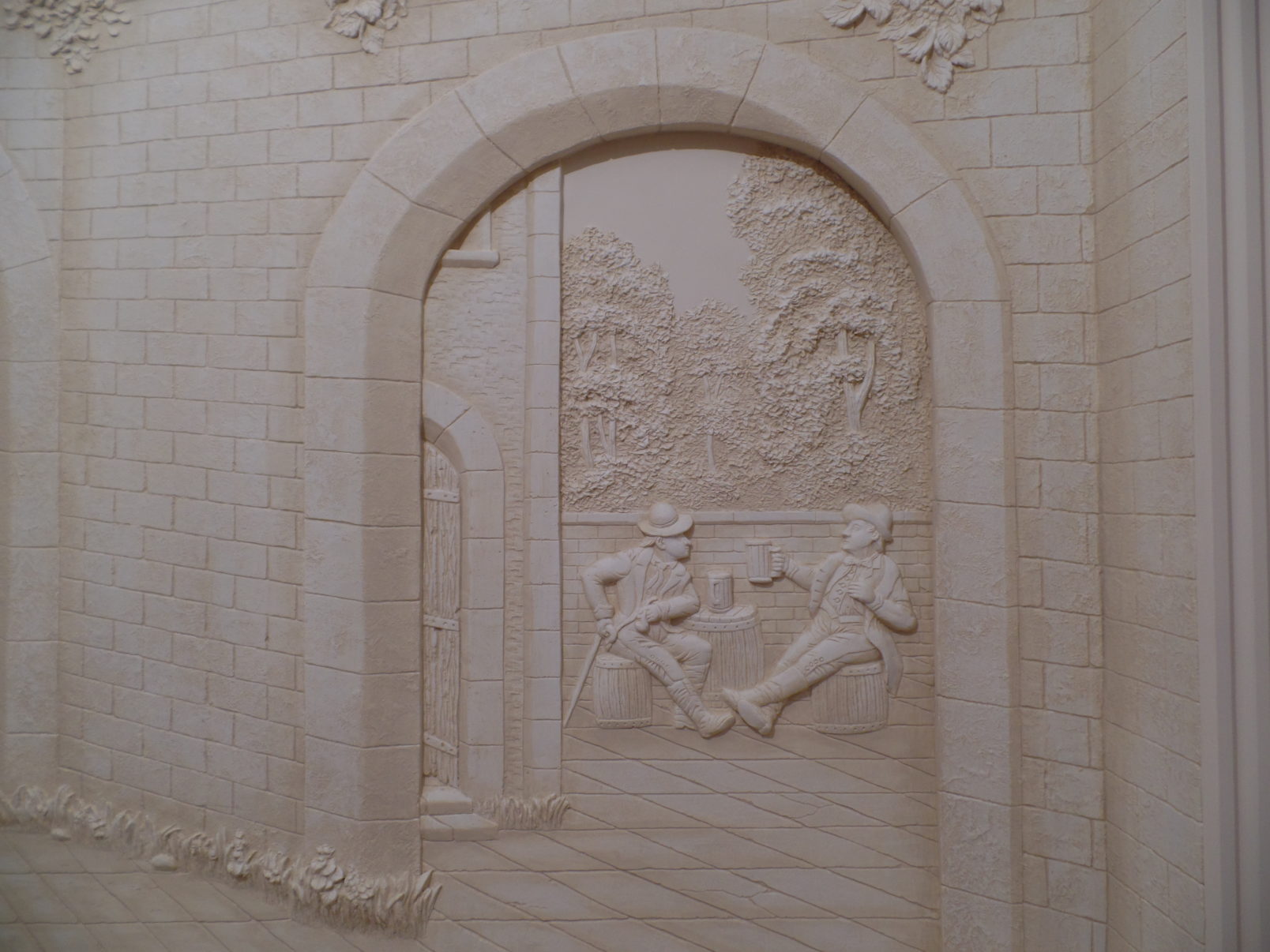
Beautiful bas-relief on the wall
Some tips
Before gluing the elements to the wall, it is better to lay them on the floor and see what happened. So you do not have to remove and glue fragments several times, and the wall will not be dirty with an extra layer of glue.
Antique figures in the image look only in the frame. To do this, the picture frame is fixed on the wall, and its internal space is aligned with putty. Then a pedestal is attached, a figurine is glued to it, all corners and cracks are puttied. The remaining decor elements are added, and the whole picture is completely covered with paint in several layers.
The putty relief is very simple. The images on the wall grow gradually, in layers. And so that there are no cracks in the picture, you need to add PVA glue to the putty. For 0.5 kg of putty - 1 tbsp. l glue and 100 gr. water.
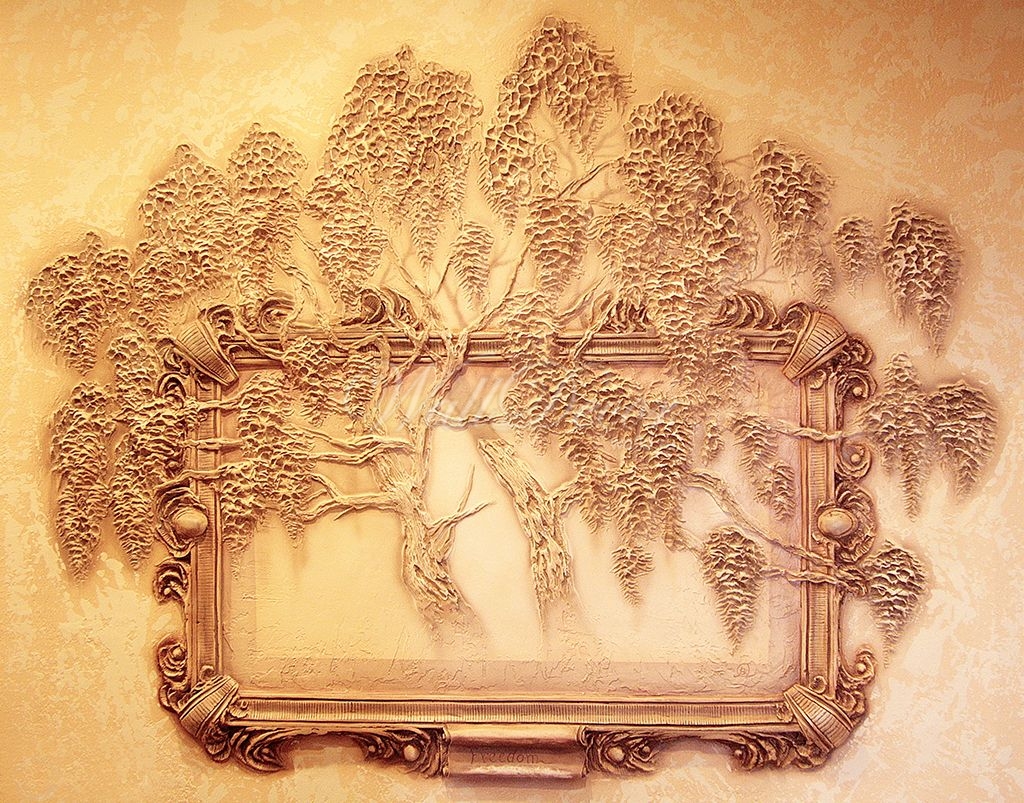
Bas-relief trees

Bas-relief with a landscape
This decor is sensitive to moisture, dust and tobacco smoke. Fresh bas-relief should be carefully protected from this. The varnish layer is updated depending on the amount of dust and light falling on the image. Wipe the bas-relief with a dry or slightly damp cloth. Soft panicles are well suited. Over time, gaps and cracks still become visible. It is enough to periodically gloss over and tint the detected defects.
Video: Bas-relief in the interior

